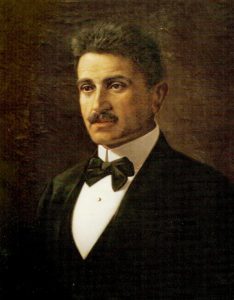
Konstantinos Theotokis (born May 13, 1872, Corfu, Greece—died July 1, 1923, Corfu), Greek novelist of the realist school, whose clear and pure Demotic Greek was flavoured by Corfiote idioms. Theotokis came from an aristocratic family that had fled to Corfu after the fall of Constantinople in 1453.
After participating in the Cretan insurrection against the Turks (1897), he became a convert to socialism. Conversant with European literature from years sent in Paris and Venice, he produced a number of translations besides his classic short stories and longer narratives. His long novel Slaves in Their Chains (1922), set in Corfu during a period of social change, reveals the old aristocracy trying to keep up a way of life that is long past, the bourgeoisie on the decline, and the newly rich trying to use their wealth to buy social status. Two long stories, The Convict (1919) and The Life and Death of Karavelas (1920) are notable.
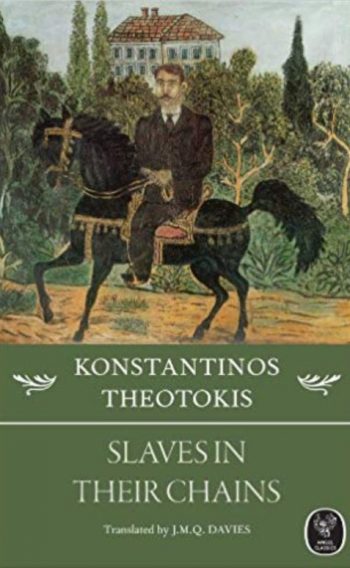
Peter Mackridge, Professor of Modern Greek, University of Oxford.
Corfu
1st Stop: The House of Konstatinos Theotokis’ s family, today’s hotel “Bella Venezia” near the central Leonida Vlachou square
The mansion of the Theotokis family, nowadays shaped inside, houses the world-famous “Bella Venezia” Hotel. This hotel was completely destroyed by an incendiary bomb on the night of September 13, 1943 when the Germans bombed and burned almost all of Corfu’s city. After the war, the hotel was always rebuilt in its original form. There, in this building, in the city of Corfu, was born in 1872, Stefanos – Konstantinos Theotokis, an emblematic form of Greek letters. His father was Markos Theotokis and his mother Angeliki Polyla, a niece of Iakovos Polylas.
2nd Stop: Museum of Solomos
In the central hall of the Museum on the first floor, a series of oil paintings by contemporary Corfiot artists depict the forms of the representatives of the Ionian School, Lorentzos Mavilis and Konstantinos Theotokis. The eleven portraits depict the poets: Dionysios Solomos, Kostis Palamas, K.P. Kavafis, Angelos Sikelianos, Kostas Varnalis, K.G Karyotakis, Giorgos Seferis, Odysseas Elytis and Yannis Ritsos, as well as the prose writers Konstantinos Theotokis and Nikos Kazantzakis.
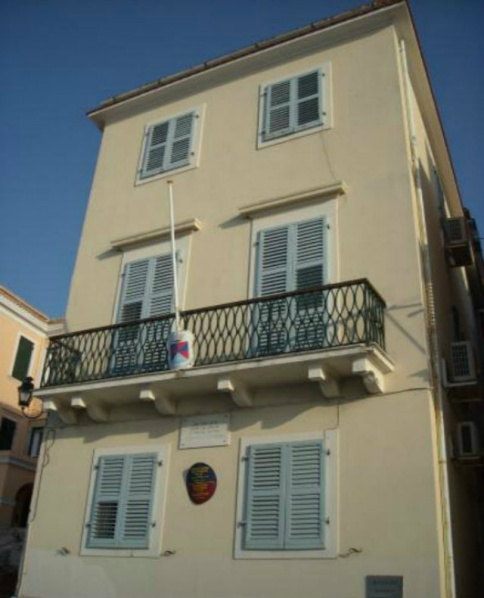
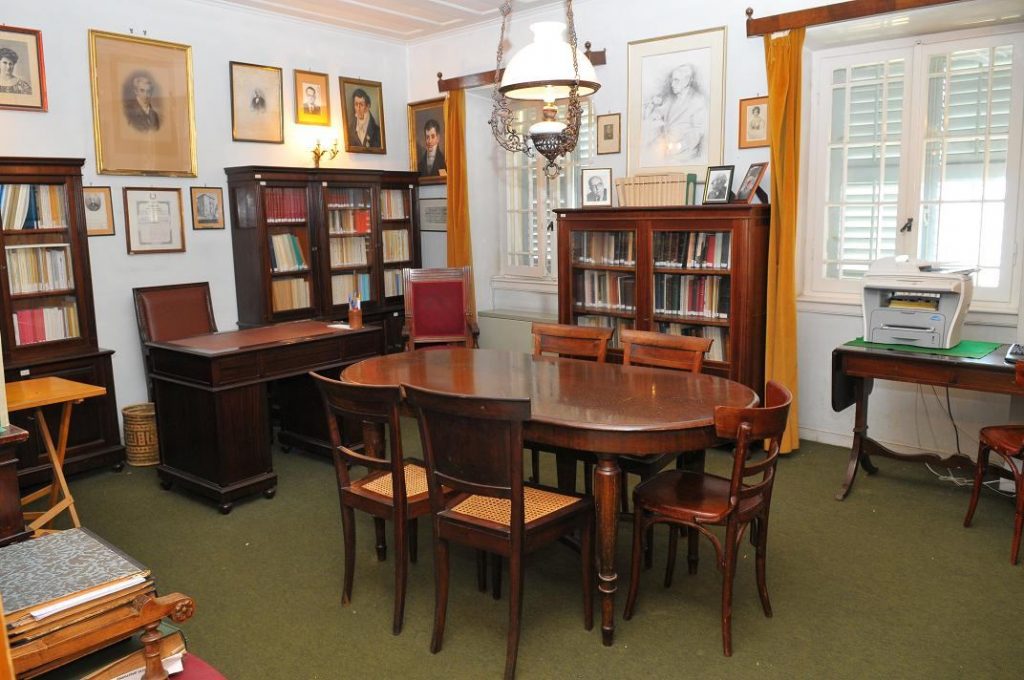
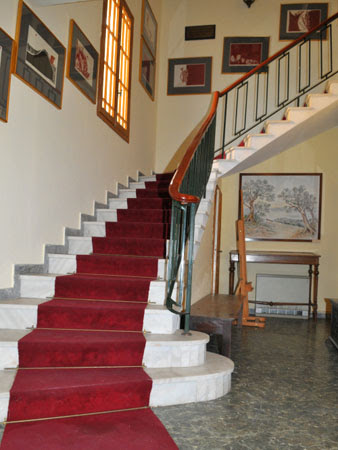
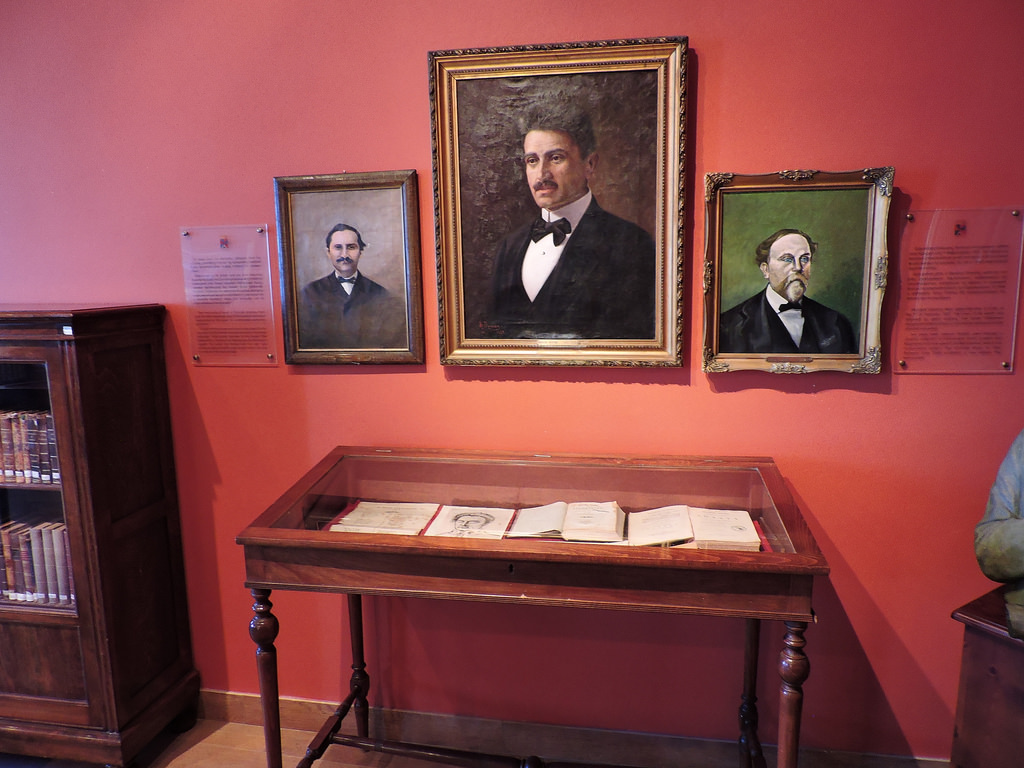
3rd Stop: Boschetto – Statue of Konstantinos Theotokis
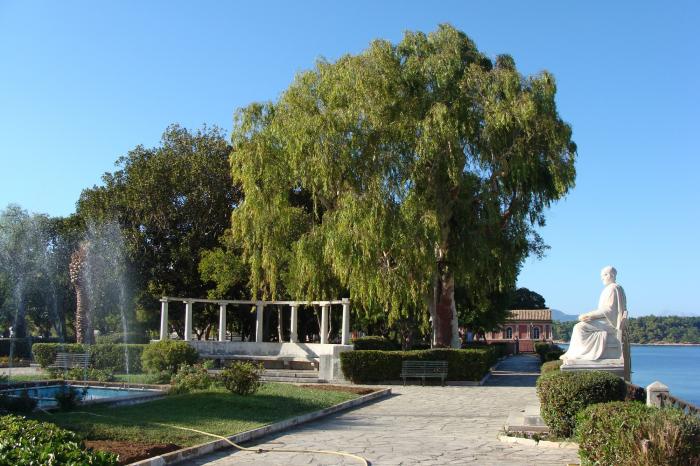
Boschetto – which in Italian means a small grove – is a small public garden between the northern trench of the Old Fortress and the Lower Square in Spianada. Boschetto is a very nice place to stroll and offers impressive views of the Fortress ditch. This blooming garden with flowers and plants has a rectangular shape and is designed with symmetry that points to a Renaissance Italian garden. Boschetto has two entrances, the central one, on the Polytechnic Fighters Street and a smaller one on its left side, next to the Panagia Mandrakina Temple. Entering the main entrance you will see the Andrian of Gilford, the English philhellene who spent much of his life in Corfu. To the right and left of the statue are two same stone semicircular benches, flanked by a peristyle. There are other busts and statues of writers and philhellenes who lived on the island. A large fountain in the center and two smaller ones symmetrically placed on the two edges of the garden and a small playground complete the picture at Boschetto. And if you did not get enough of the small piece of greenery, right next to Boschetto, to the side of the Palace, there is still a beautiful public garden, the Garden of the People, with a beautiful view of the Old Fort and the island of Vido.
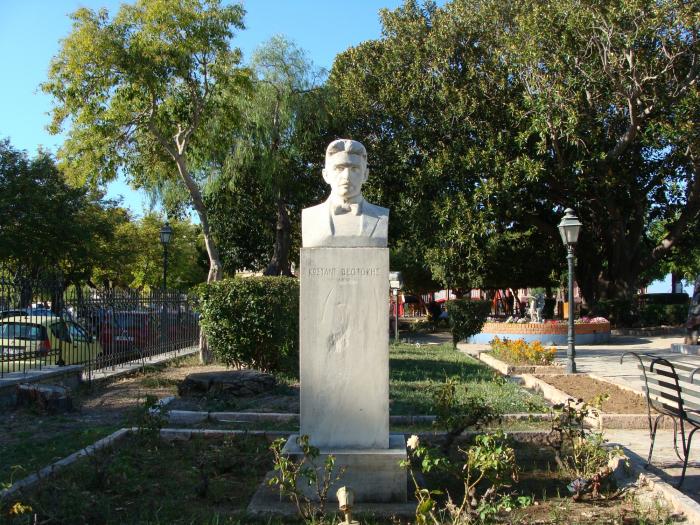
4th Stop: Karousades village – Mansion of Konstantinos Theotokis
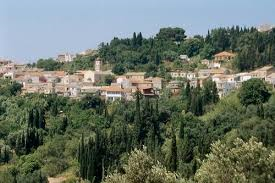 Karousades is a village located on the northwest side of Corfu. It is about 40 km from the city of Corfu. It is a big village that stands out for the traditional architecture of its settlements. Karousades have a municipal philharmonic orchestra which was founded in 1980. According to a theory, the village was named after refugees who came to the island of Corfu from the city of Karousa of the Black Sea. In Karousades, the Theotokis family settled in 1453 and its mansion is still preserved. The mansion is not open to public, but can be viewed from the road.
Karousades is a village located on the northwest side of Corfu. It is about 40 km from the city of Corfu. It is a big village that stands out for the traditional architecture of its settlements. Karousades have a municipal philharmonic orchestra which was founded in 1980. According to a theory, the village was named after refugees who came to the island of Corfu from the city of Karousa of the Black Sea. In Karousades, the Theotokis family settled in 1453 and its mansion is still preserved. The mansion is not open to public, but can be viewed from the road.
When Theotokis returns to Corfu with his wife they will settle in the tower of the family they had in the settlement of Karousades. With his establishment in Greece he will meet with Lorentzo Mavilis and will be one of the first to join the movement of demoticism. In his move he will come into contact with the socialist ideas with which his works are related. In 1917 the fall of the Austro-Hungarian monarchy occurred, and Theotokis and his wife lost all their fortune. The last few years of his life have been very difficult, due to financial and health problems. Especially the state of his health was a big problem. He suffered from stomach cancer where after the surgery he performed in Evangelismos in Athens, his doctors recommended that he left for Corfu. He will leave his last breath, in the Giallina mansion, in Corfu town, on the first of July 1923.
